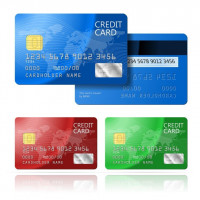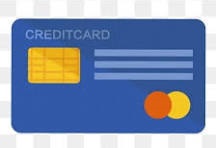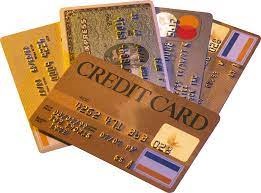How Cybercriminals Trade Stolen Data: A Look at Feshop and Similar Sites

Strong 8k brings an ultra-HD IPTV experience to your living room and your pocket.
In today’s digital world, data has become a valuable currency—not just for businesses, but also for criminals. Behind the scenes, cybercriminals run thriving underground markets where stolen credit cards, login credentials, and full identity profiles are sold to the highest bidder. Among the most notorious platforms that enabled this trade was Feshop, a now-defunct dark web site that played a central role in the global data theft ecosystem.
This article explores how stolen data is traded on the dark web, with a detailed look at feshop and similar marketplaces that have fueled cybercrime on a global scale.
What Is Stolen Data?
Stolen data refers to any personal or financial information that has been illegally obtained. This can include:
Credit and debit card numbers (CVV and Track 1/2 data)
Social Security numbers
Bank login credentials
Email passwords and account access
Driver’s license and passport scans
Fullz (complete identity profiles)
Once stolen—often through phishing attacks, malware, or data breaches—this information is packaged and sold on the dark web.
The Role of Feshop in Data Trading
Feshop was a specialized cybercrime marketplace that gained infamy for offering a user-friendly, highly organized platform for buying and selling stolen financial data. Unlike general-purpose dark web forums, Feshop focused almost entirely on credit card fraud and identity theft.
Key Features of Feshop:
Searchable Catalog: Users could filter data by card type, issuing bank, country, and BIN (Bank Identification Number).
Instant Downloads: After payment in cryptocurrency (typically Bitcoin), stolen data was immediately downloadable.
Open Registration: Anyone could join without an invitation, making it a popular entry point for novice criminals.
Pricing Models: Prices varied depending on the card’s balance, issuing bank, and location—U.S. and EU cards often fetched higher prices.
How the Data Trade Works on Sites Like Feshop
1. Sourcing the Data
Cybercriminals acquire data through:
Skimmers and malware installed on point-of-sale systems
Phishing schemes that trick users into giving up credentials
Data breaches from companies with weak security
Dark web scraping and account combo list trading
2. Listing the Data for Sale
Once stolen, the data is listed on sites like Feshop or other marketplaces such as:
BriansClub
Joker’s Stash
Unicc (now defunct)
Russian Market
Listings typically include:
Card type (Visa, MasterCard, AmEx)
Cardholder name and billing address
Card expiration date and CVV
Country of origin and issuing bank
3. Payment and Download
Buyers fund their accounts using Bitcoin or Monero. Once purchased, the data is either emailed or made available through secure download portals. In many cases, buyers test the cards through fraudulent purchases or ATM withdrawals.
4. Money Laundering and Monetization
After acquiring valid data, cybercriminals:
Purchase high-value goods and resell them
Withdraw money via fake ATMs or drop accounts
Use mule networks to cash out and avoid detection
The Impact on Individuals and Businesses
The trade of stolen data affects:
Consumers, who suffer financial loss, identity theft, and credit damage
Businesses, which face fraud costs, chargebacks, and reputational damage
Financial institutions, which must reimburse losses and invest heavily in fraud detection
The global cost of cybercrime is expected to surpass $10 trillion USD by 2025, and much of that damage stems from platforms like Feshop.
How Law Enforcement Responded
Over the years, coordinated actions by global law enforcement agencies have led to the takedown of several dark web marketplaces, including Feshop. Domain seizures, administrator arrests, and blockchain tracing have helped slow down operations, but new marketplaces continue to emerge.
Key international efforts include:
Operation Disruptor (2020)
Europol and FBI collaborations
Seizure of cryptocurrency wallets used by site administrators
Feshop’s Legacy and Current Landscape
Although Feshop was eventually taken offline, its influence continues through:
Copycat marketplaces with similar layouts and functions
Decentralized data leaks and Telegram channels
Private fraud forums that share tools and carding tutorials
Examples of similar sites include:
BriansClub – a major competitor of Feshop with a similar business model
Russian Market – offers not just cards, but also login credentials and malware
Genesis Market – known for selling digital fingerprints and browser profiles (recently disrupted)
Protecting Yourself from Data Theft
1. Monitor Your Accounts Regularly
Check your bank and credit statements frequently for unauthorized charges.
2. Use Strong Passwords and 2FA
Avoid reusing passwords across accounts, and enable two-factor authentication wherever possible.
3. Freeze Your Credit
Freezing your credit can prevent identity thieves from opening new accounts in your name.
4. Be Cautious Online
Don’t click on suspicious links or give out personal information unless you’re certain it’s secure.
Conclusion
The story of Feshop is a chilling reminder of how organized and accessible the digital black market has become. It allowed cybercriminals across the globe to buy and sell stolen data with near impunity—until law enforcement brought it down. Yet, the infrastructure it helped create lives on through copycats and evolved cybercrime platforms.
Staying informed, practicing digital hygiene, and supporting stronger cybersecurity policies are essential steps we must all take to combat this ongoing threat.
Note: IndiBlogHub features both user-submitted and editorial content. We do not verify third-party contributions. Read our Disclaimer and Privacy Policyfor details.







